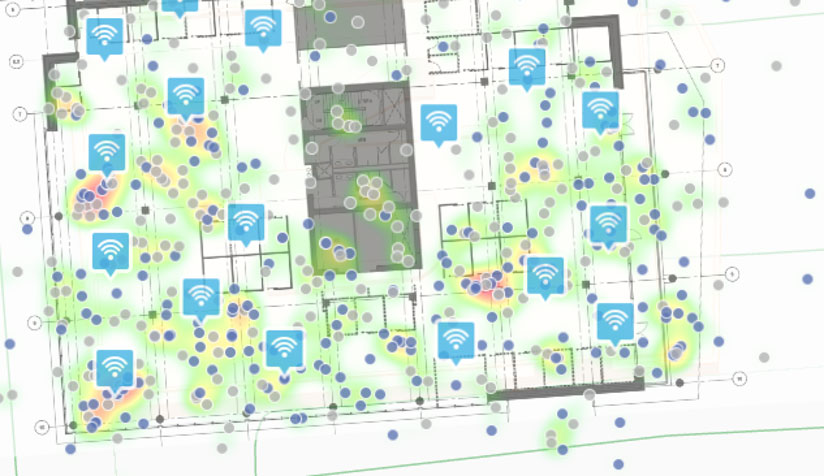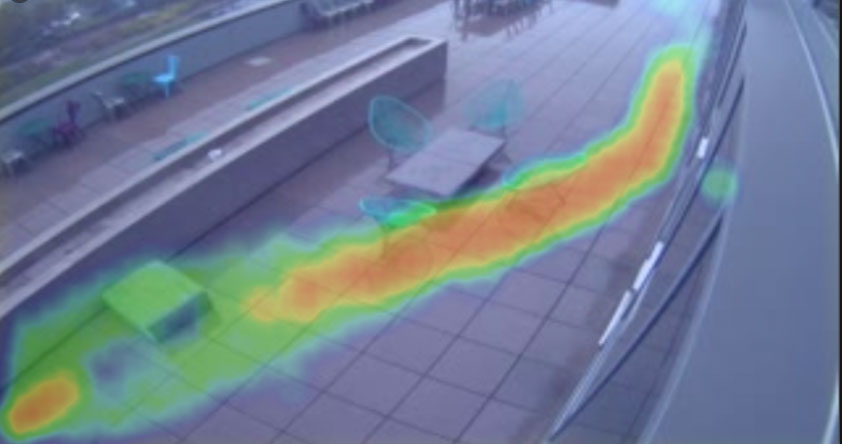To the human eye, it can be easy to believe that no patterns of customer movement within brick-and-mortars exist (plus, staring down in-store customers while they shop might not be the best look). Unless there is a release of a new product or your store is having a special going on in a particular department, it would be easy to assume that consumer movements appear random and even chaotic—this is, until you turn to data to find a method in the madness.

Thanks to heat mapping, it is now easy to gain priceless insights into customer behaviors within retail stores to ultimately drive sales (without the creepy staring factor, of course). The benefits are tremendous: You can see how customers shop, where they linger the most and then use all of that information to improve your store’s layout, sales and setup. Let’s take a dive into how the technology works to better understand these advantages.
Heat mapping 101
Heat mapping tracks customer movements throughout a store and delivers data in the form of a map showing “hot” and “cold” spots. Areas appearing as orange, red or pink indicate high traffic. Blue and green represent spaces where customers spend little time. These colors are the result of accumulated presence data and are so accurate that it’s possible to tell which individual items in a display or on a table are the most popular.
Heat mapping technology tracks movement in real time via WiFi or cameras:
- WiFi heat maps identify customer foot traffic and where they are spending their time within the store. The rapid adoption of mobile devices has made it possible for organizations to leverage data to better understand foot traffic patterns and behavior in brick-and-mortar environments. Information from smartphones can be used to identify presence, time spent and repeat visits within range of a WiFi access point.

- IP Camera heat maps track motion within a camera view, and more motion detected means more foot traffic. However, the heat maps from an IP Camera differ by showing the actual view from the camera with a heat map overlay. Here is an example of how restaurants can use this table for table placement, understanding how guests and employees navigate through dining areas and around the table layout.

How heat mapping is supporting retail
We know that heat mapping is an incredibly useful way to learn where in-store customers are most likely to buy products. The benefits don’t stop there, though. With heat mapping, retail stores can change their entire store layout with this valuable information. It can also track foot traffic to customer receipts to know if merchandise is appealing to customers, but they aren’t buying it. This new technology can also add a new dimension to in-store surveillance and get even more specific into the age or gender of consumers interested in certain products.
WiFi and IP Camera heat maps, better together
When applied together, WiFi and camera heat maps are great tools that retailers can use for merchandise layout, dining layout, product sales and additional promotions. The best part? These insights are all readily available for retailers to apply to make quick and easy decisions backed by real data.
To make heat mapping more accessible to Windstream Enterprise customers and retailers, we have partnered with Meraki, the leader in the IP Camera & WiFi space with one of the highest quality camera products on the market. Pairing these two Windstream LAN services provides retail customers with information that can revolutionize their business. LAN Services includes Secure WiFi & Analytics and IP Camera products that reduce the burden on your IT staff so they can focus on strategic initiatives. As part of our co-managed solution, you can leave monitoring and maintenance to the experts at Windstream so you can focus on obtaining better results that serve your customers and overall business.
To learn more about the benefits of heat mapping as part of LAN Services, our website is a great place to start. From there, we can connect you with experts to talk through your organization’s specific needs.
